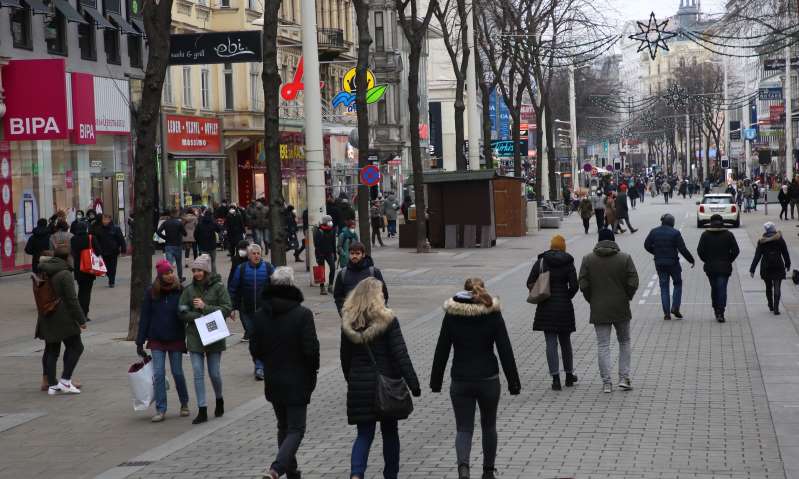According to Raiffeisen analysts, the pent-up consumption will inevitably lead to an upturn.

The analysts at Raiffeisen Bank International (RBI) do not expect economic performance in Euroland and Austria to return to pre-crisis levels until the beginning of 2023. This “crisis of the century” has cost two to three years of economic output. Badly hit sectors are likely to struggle for normalcy well into the 2020s. Despite renewed lockdowns in large parts of Europe, experts see recovery potential in 2021, at best a little later than expected.
Horror news
After the Corona year, which has said goodbye with repeated horror reports for Covid infections, drastic restrictions are expected at least in the first quarter of 2021. The economic dynamics for the first quarter are currently set by the RBI economists for the previous quarter (not annualized) hard at zero, i.e. from zero to at most 0.5 percent plus. If it is still slightly negative, the second quarter will be correspondingly more positive.
This is currently seen as a plus of 2.5 percent compared to the previous quarter, or higher. The subsequent larger – consumption-driven – “incomplete” upturn would fall in the third quarter. RBI is therefore sticking to its expectation of GDP growth of 3.5 percent for the year as a whole – after a fall of 7.2 percent in the past year.
Even if there were delays in rolling out the hoped-for corona vaccinations and the vaccine start did not go smoothly after a record-breaking vaccine development, the vaccination cycle that has started gives hope for improvement in the further course of the year. In the fourth quarter, according to RBI, GDP fell by only 4 percent compared to the previous quarter, Austria benefited here from the industrial burden and export links. In private consumption, however, Austria experienced an unprecedented decline.
Compulsory saving
If the “artificial barriers” are lifted, the forced saving or fearful saving ends, so much pent-up consumption will be released that growth is absolutely necessary, said RBI chief analyst Peter Brezinschek and Gunter Deuber, who has been head of the economics and financial analysis department since the beginning of January on Thursday.
How much money private households put aside during the corona crisis instead of spending it is shown by the development of the savings rate, which jumped to 25 percent in mid-2020 and then came to 13.5 percent for the year as a whole – after 8.5 percent in the year before Crisis. According to the RBI, the incomes of those who remained in employment did not decline that much last year due to fiscal measures and short-time work.
The experts continue to expect the will of politicians and central banks to support the beginning of a new economic cycle with economic, fiscal and monetary policy. Raiffeisen will not see any change in key ECB interest rates until 2024/2025. Through the bond purchase programs, the European Central Bank (RZB) now holds 20, 30 percent or more of the government bonds of the individual countries.
External shock
The bond yields are estimated to be skewed 2 percentage points downwards. Through reinvestments, the central bank is likely to be active in the capital market well into the 2030s. The financial markets themselves had quickly processed the external shock from Corona last year.
After the storming of the Capitol in Washington by supporters of the elected US President Donald Trump, the stock exchanges did not really get upset this Thursday. Brezinschek sees the act of violence as a unique event, the ability of US democracy to act is in no way endangered.
As unpleasant as such violent actions are, they have little influence on the long-term economic development. “These are the driving forces behind the stock markets.” All in all, the hope for the US market is more political stability and clearer economic policy directions for trade relations with Europe.

